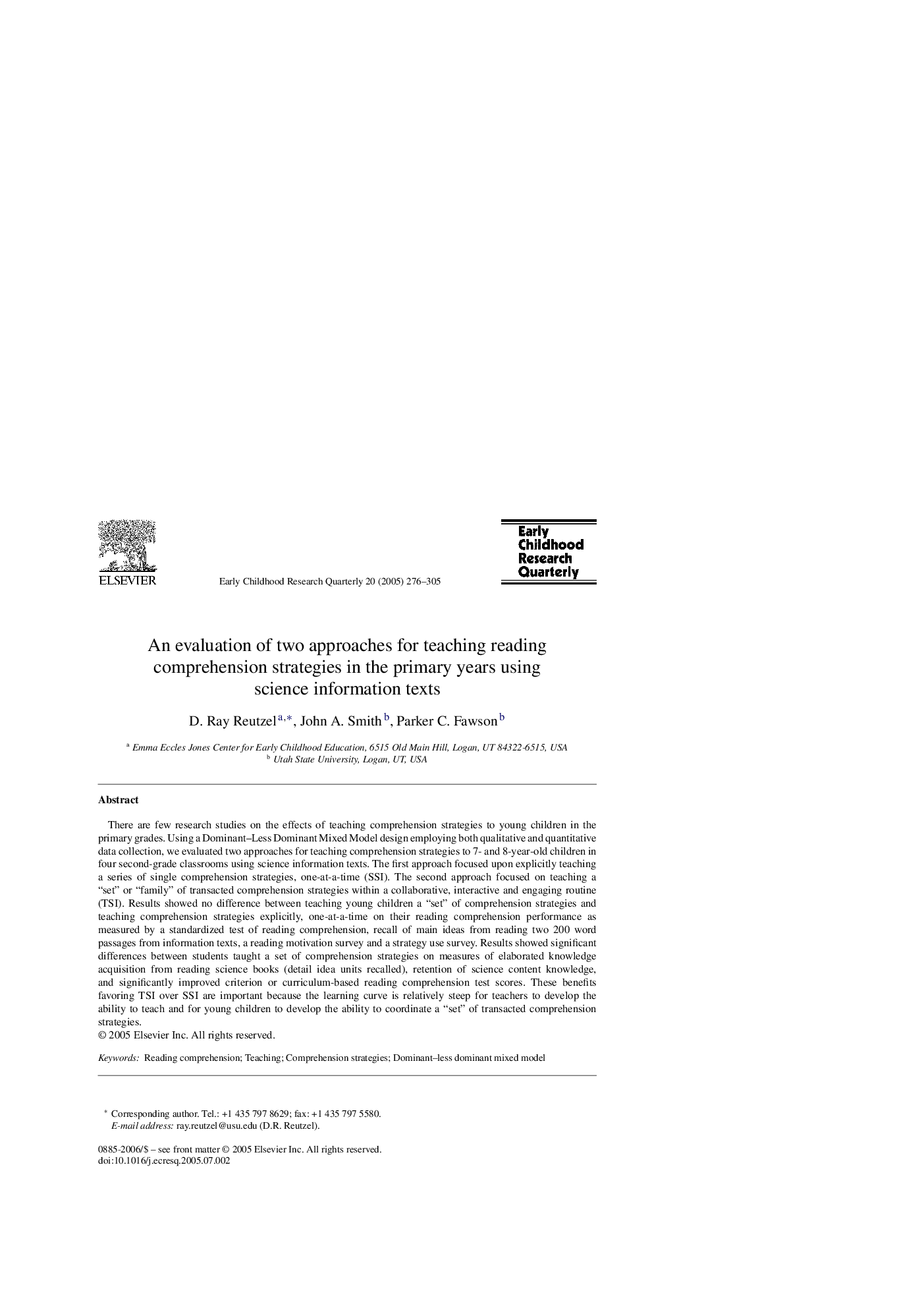| Article ID | Journal | Published Year | Pages | File Type |
|---|---|---|---|---|
| 10313506 | Early Childhood Research Quarterly | 2005 | 30 Pages |
Abstract
There are few research studies on the effects of teaching comprehension strategies to young children in the primary grades. Using a Dominant-Less Dominant Mixed Model design employing both qualitative and quantitative data collection, we evaluated two approaches for teaching comprehension strategies to 7- and 8-year-old children in four second-grade classrooms using science information texts. The first approach focused upon explicitly teaching a series of single comprehension strategies, one-at-a-time (SSI). The second approach focused on teaching a “set” or “family” of transacted comprehension strategies within a collaborative, interactive and engaging routine (TSI). Results showed no difference between teaching young children a “set” of comprehension strategies and teaching comprehension strategies explicitly, one-at-a-time on their reading comprehension performance as measured by a standardized test of reading comprehension, recall of main ideas from reading two 200 word passages from information texts, a reading motivation survey and a strategy use survey. Results showed significant differences between students taught a set of comprehension strategies on measures of elaborated knowledge acquisition from reading science books (detail idea units recalled), retention of science content knowledge, and significantly improved criterion or curriculum-based reading comprehension test scores. These benefits favoring TSI over SSI are important because the learning curve is relatively steep for teachers to develop the ability to teach and for young children to develop the ability to coordinate a “set” of transacted comprehension strategies.
Keywords
Related Topics
Social Sciences and Humanities
Psychology
Applied Psychology
Authors
D. Ray Reutzel, John A. Smith, Parker C. Fawson,
